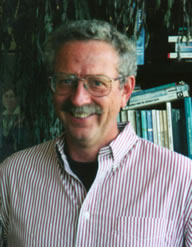 What Makes Classic Science Fiction "Classic"?
What Makes Classic Science Fiction "Classic"?
Workshop Leader: David Mogen, David.Mogen@ColoState.edu
Enrollment Limit: 25
This workshop will be a conversation about artistic and intellectual values in science fiction when considered as a "literature of ideas." After a brief consideration of the ways that science fiction combines intellectual speculation ("science") with enduring mythological themes ("fiction"), we will discuss six texts selected to illustrate both a wide range of styles and themes, and to sketch in the historical and cultural evolution of the genre: Mary Shelley's Frankenstein (1818), H. G. Wells' The Time Machine (1895), Aldous Huxley's Brave New World (1932), Ray Bradbury's The Martian Chronicles (1950), Ursula K. LeGuin's The Left Hand of Darkness (1968), and William Gibson's Neuromancer (1984). To what extent does each of these texts deserve (or not deserve) a reputation as a "classic" of the genre? Why? What other authors and texts might be considered "classic"? What contemporary writers and artists might be seen as classic in generations to come? To what extent is science fiction itself evolving and changing, through expansion into new media, through transforming paradigms of both science and art?